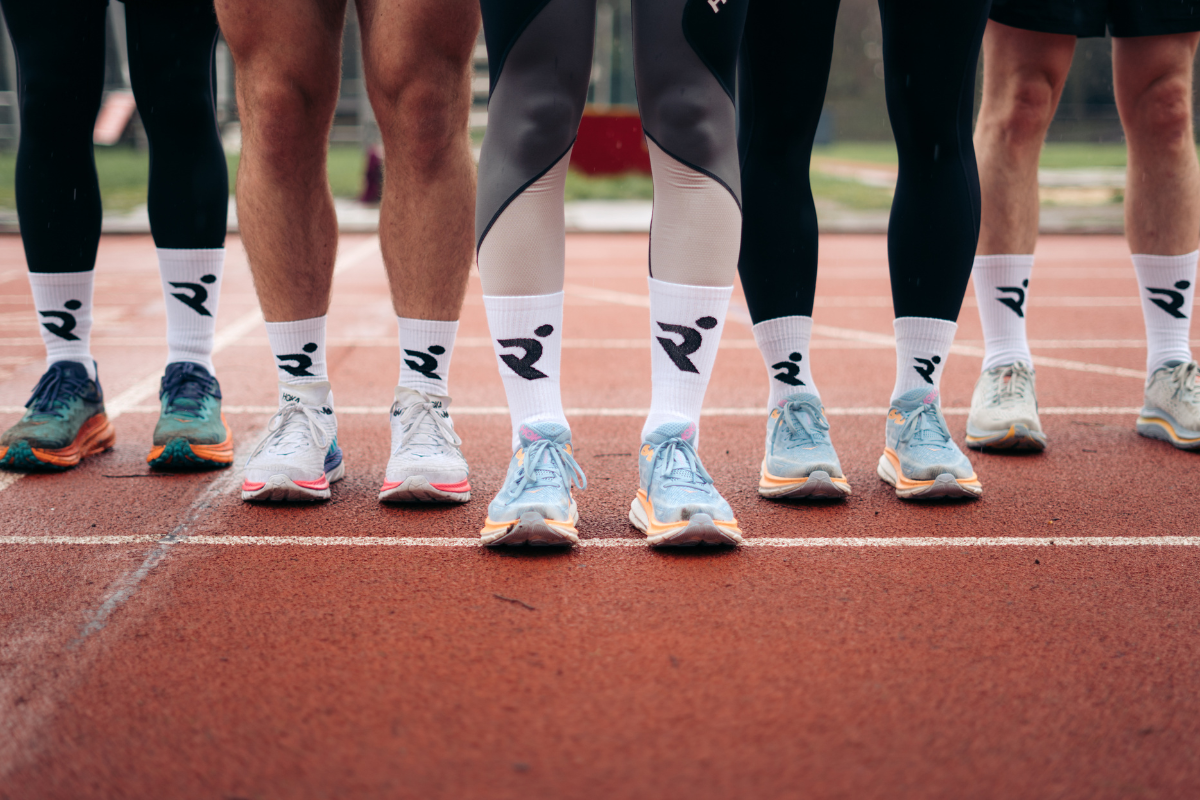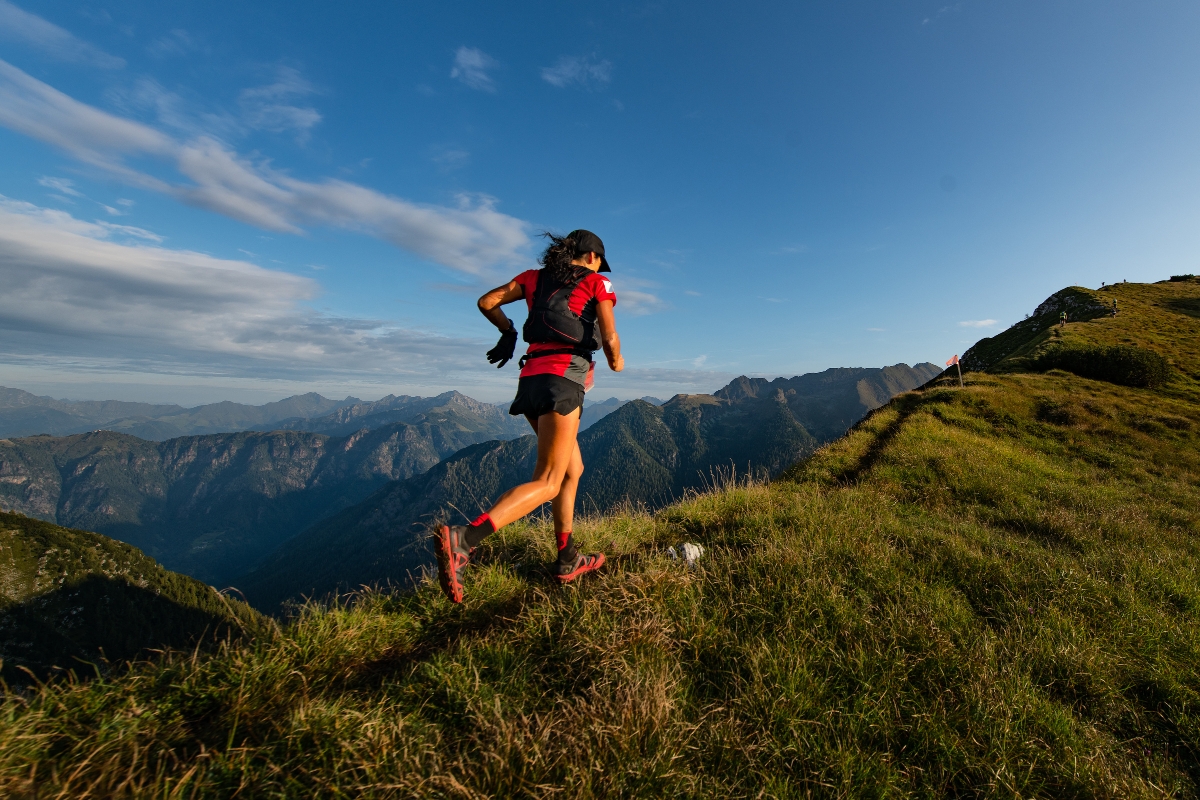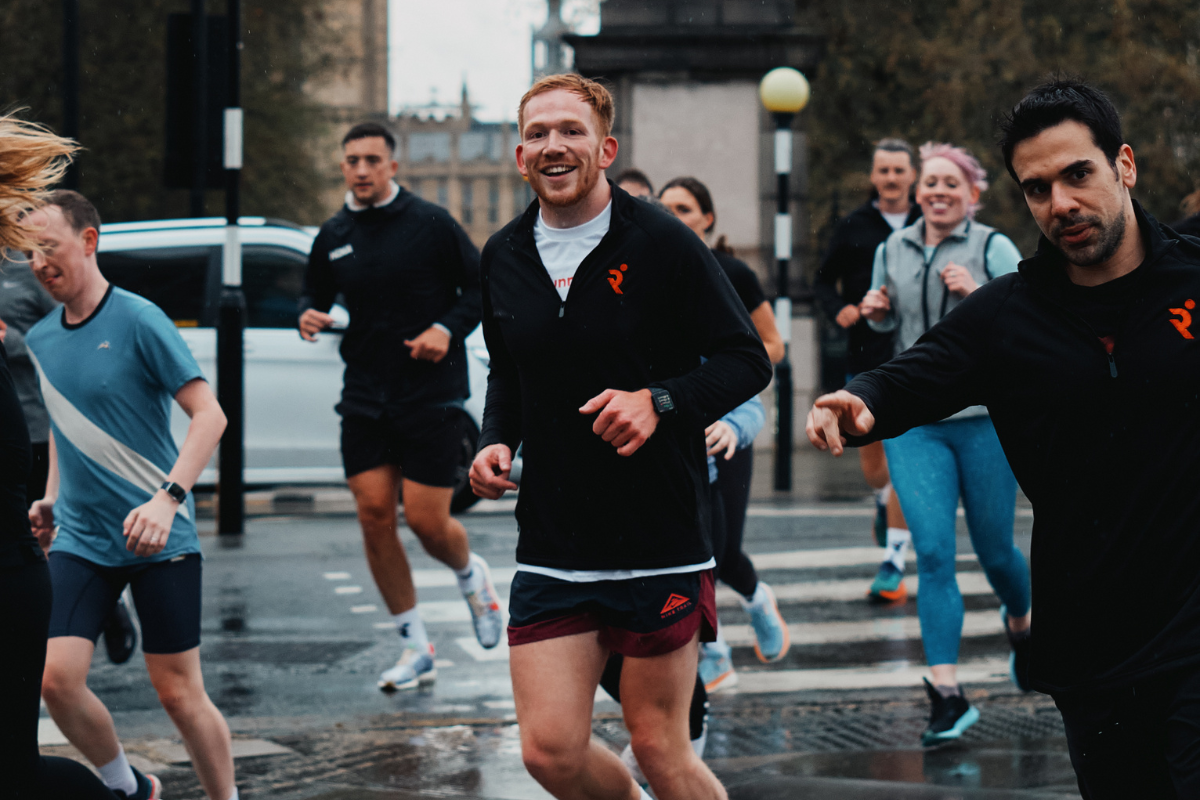There comes a time in every runner’s journey when it becomes less of a blue-moon hobby and a part of your lifestyle. Where your hallway is full of running shoes, your Runna app has pride of place on your home and you’re dreaming of your next PR. But somewhere along this journey, you’ll realize there’s a whole new language to learn.
Don't worry, though. We’ve all been overwhelmed by the runner lingo at some point or another. But with a little practice, you'll have picked the language of runners in no time and speaking it so fluently your old language teacher would be proud.
So whether you’re trying to remember exactly what a “negative split” means or want to win a debate over what the heck VO2 max is, we’ve pulled together a helpful guide complete with 25 running terms for beginners.

1. Distance: This one’s about as obvious as they come. Yepp. It’s quite simply the length of a race or the distance of a particular run, whether that be 5K, 10K, a half-marathon, marathon or anything else.
2. Pace: When your experienced runner friends start discussing their pace, they’re talking about the speed they were running, which is usually measured in minutes per mile. As such, you can expect your pace to vary depending on the distance and terrain.
3. Cadence: This is all about the number of steps you take per minute when you’re out pounding the pavements. Pro tip: A faster cadence can help improve your form and reduce the risk of injury.
4. VO2 Max: Taking you back to GCSE science, your VO2 max refers to either your maximum oxygen uptake or the amount of oxygen your body is able to use during a run. Basically, the aim of the game is to improve your VO2 max as that’s a surefire way to improve your running performance. It’s also the first thing to decrease when you take a break from running.
5. Threshold: There is a point where your body switches from using primarily aerobic energy to embracing that anaerobic energy. This is called the threshold, and training near yours is one of the most effective ways of improving your endurance.
6. Hill Repeats: This one is like Ronseal – it does exactly what it says on the tin. It’s where you run up and down a hill multiple times to improve your strength and endurance. That’s what makes it such an epic form of training and the perfect preparation for a trail run or race.
7. Fartlek: [Insert chuckle here] The Swedish word for "speed play," a fartlek is a speedwork format that involves varying your pace during a run by alternating between fast and slow intervals for however long you want.
8. Interval training: Technically, interval training refers to the time spent recovering between speed segments. But the term is commonly used to refer to repeating short, high-intensity efforts followed by periods of rest or low-intensity recovery, which is a great training technique for anyone looking to improve their speed and endurance.
9. Taper: In the build up to a race, especially long distance ones, there will be a period where you preserve your energy levels by reducing your training volume and intensity in the days and weeks prior. This is to allow your body to recover and perform at its best on the day.
10. Recovery Run: Recovery is the secret weapon of every experienced runner, and recovery runs are a part of that. Essentially, they are slow, easy runs that help your body recover from harder workouts and improve your base aerobic fitness.
11. Cross-Training: Any other type of exercise a runner might do to improve their condition, complement their training and improve overall fitness, such as strength training, cycling and swimming.
12. Stride: Strides are short, gradual bursts of acceleration of less than 30 seconds done at around 90% of your maximum speed that are used to improve running form and efficiency. Of course, a single step taken during a run can also be called a stride, so make sure you have the context or you’ll be a little confused.
13. PR or PB: These stand for Personal Record or Personal Best, referring to your fastest time over a given distance, such as 5K or marathon. We love a PR.
14. Negative Split: This is when you run the second half of a race or run faster than the first half, which can be a strategic approach to pacing your race.
15. Fueling: Eating and drinking before / during a run to maintain your energy levels and prevent dehydration. To put that into context, hitting the wall often occurs because you’ve run out of fuel and need carbohydrates that the body can convert into fuel for the muscles to use. Common fueling options include gels, sports drinks, and water.
16. Hydration: Nothing is more important than drinking enough fluids before, during, and after a run to prevent dehydration and allow your body to perform at its pique. As for your personal hydration needs, that will depend on factors like temperature, humidity, distance and more.
17. Compression: Wearing compression socks (or other garments) with the sole aim of improving your blood circulation, and reducing the chance of muscle soreness and fatigue.
18. Shoe Drop: The difference in height between the heel of and toe of a running shoe. Traditionally, running shoes had a larger drop, with a thick, cushioned heel and a lower, flatter toe box. But in recent years, there’s been a pretty big swing toward lower-drop shoes, which promote a more natural foot strike, while possibly helping to reduce the risk of certain injuries.
19. Pronation: This refers to the natural inward rolling of your foot as it lands while you’re running. The reason this is such a common term nowadays is because some runners overpronate, which can increase the risk of injury.
20. DOMS: This stands for Delayed Onset Muscle Soreness, which is a feeling of discomfort in your muscles 1 to 3 days after a heavy workout. This doesn’t necessarily mean the workout was good, just that you are not used to that level of intensity.
21. Rest Day: An essential part of every runner’s training plan, rest days are a chance to let your body adapt to the stress of training through sleep, nutrition and active recovery as a way to avoid overtraining and make significant progress.
22. Dynamic / Static Stretching: Dynamic stretching involves light, bouncy movements through the range of motion to warm up the body before running, whereas static stretches are where you hold a position at the end of your range. Whichever you prefer, they’re an effective way to relax tight muscles at the end of a run.
23. Carbo Load: Switching your macronutrient ratio to be more carbohydrate heavy in the days leading up to a race as a way to replenish your glycogen (energy) stores; something that can be incredibly beneficial for races beyond 90 minutes.
24. Cool-Down: The last part of a runner’s workout, the cool down has one goal and that’s to get your heart rate (and breathing) back to a more normal level. What you do is a matter of personal preference, but it usually involves a short walk, maybe a gentle jog, and some dynamic stretching.
25. The feeling of pure euphoria you get during or after a run when your brain is releasing natural chemicals into your body. From endorphins to endocannabinoids, this feeling is what makes running so addictive.
Thanks for reading. For more running insights, inspirations, stories and techniques, follow us on Instagram and Facebook -- or simply check out our personalized running plans at Runna.





